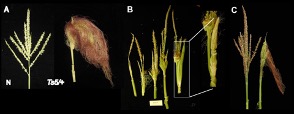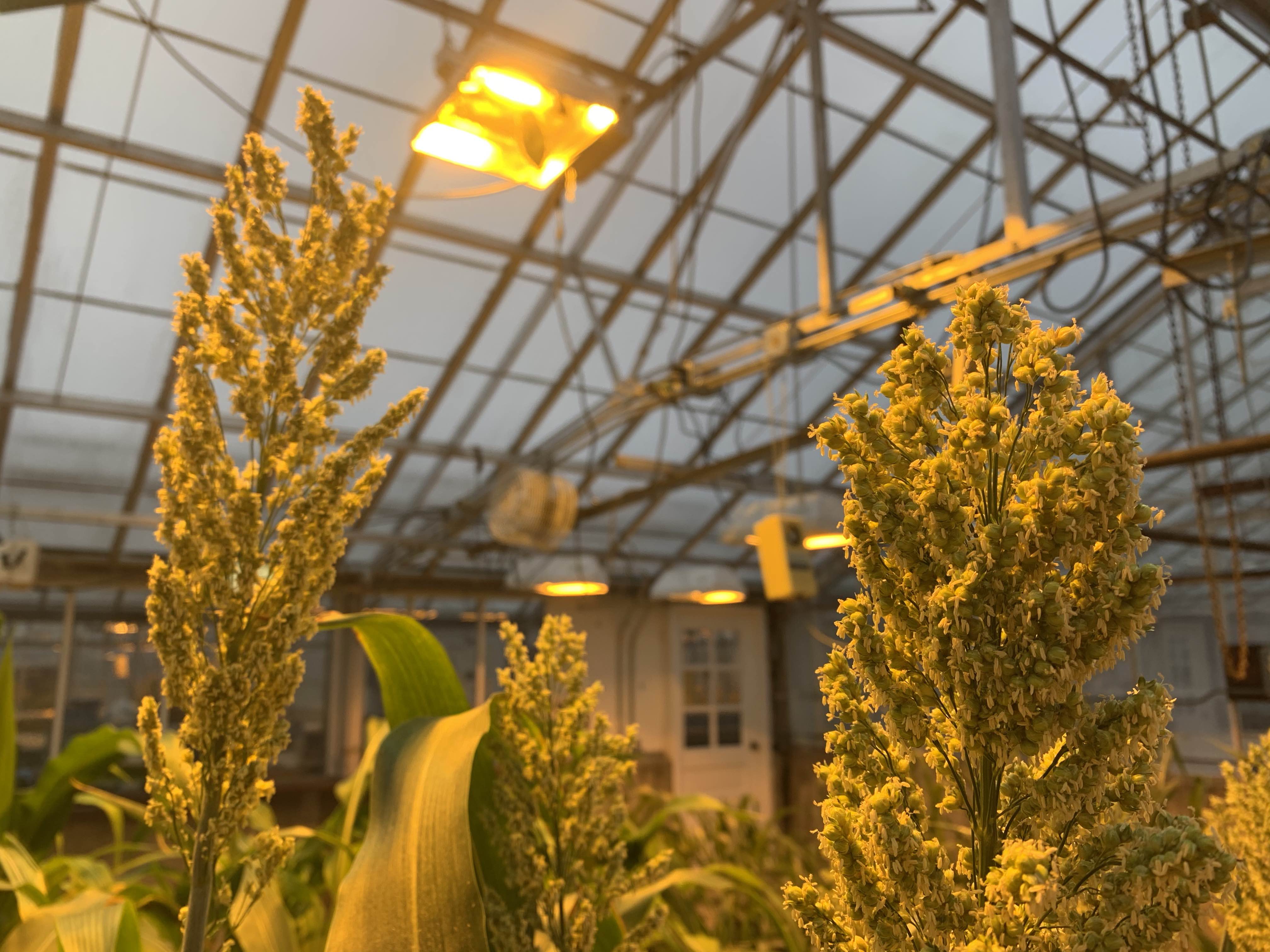Plants make a beautiful diversity of leaves, branches, stems, flowers, and other organs throughout their life. But if you plant two seeds from the same batch in different conditions, the plant that grows might have a very different number and arrangement of organs. That body plan flexibility is possible because plants maintain a population of pluripotent stem cells throughout the growing season. To make a leaf, a plant must coordinate the recruitment and growth of those initial stem cells as they transform into all the tissues required for photosynthesis. How does the plant do it??
The lab is broadly interested in the way that gene expression dynamics lead to changes in shape and size during development. We work at the scale of single cell morphology, all the way up to comparing the ways that different species produce complex shapes. Our efforts are mainly focused on the genetics that give maize, sorghum, and other grass leaves and infloresceneces their characteristic properties.
Current Projects
The Latent Genetics of Maize Leaf Veins

A dense network of veins is critical for efficient photosynthesis in all land plants. Grasses that use C4 photosynthesis, like maize and sorghum produce an extremely dense network of veins in their leaf tissue. Although most veins are similar in structure, these repeated events provide a unique opportunity for specialization amongst tissues generated at different times and locations. We are working to understand the genes that control these specialized vein subtypes and whether similar tissues within an organism can be constructed for different purposes.
To test this hypothesis we are using live cell imaging and single cell transcriptomics to track and identify key fate-determining factors in developing leaf vein subtypes amongst all developing leaf cells. In collaboration with the lab of Dr. George Chuck at UC Berkeley, we are mapping and functionally characterizing maize specialized vascular mutants, many with wilted phenotypes. We predicted vascular phenotypes from tens of thousands of cleared leaf images by first constructing a convolutional neural net (CNN) to classify pixels from leaf images. We then performed a genome-wide association study (GWAS) of 760 maize varieties from around the world, to map new genes and alleles correlated with specialized vascular development and discover the secret genetics of maize veins.
Data derived from these aims will inform the precision breeding of specialized vascular traits for the continued improvement of maize to meet global demand for food, feed, and fuel.
This work is supported by the National Science Foundation, Plant Genome Research Program, Grant IOS-2211434
Dissecting the genetic network of grain production in maize and crop relatives

Although many flowering plants produce fully fertile bisexual flowers, maize produces two types of flowers in difference places on the plant: flowers in the ear contain carpels, floral organs that form the grain, and flowers in the tassel contain stamens, floral organs that release pollen. Early in flower development, flowers from the tassel and ear are indistingishable and contain both stamens and carpels. Hormone and genetic pathways act to repress stamens in flowers in the ear and suppress carpels in the tassel. Although a few genes are known to regulate this suppression, we are working to understand the coordinatiated way that carpel cells in the tassel are suppressed and the gene expression changes that come along with sex determination in maize and other grasses.
In this project, we will expand the list of genes with known roles in carpel suppression through high throughput sequencing and genetic mapping of classic maize mutants with tasselseed phenotypes. We will use hormone treatments and genetic interaction studies to determine how carpel suppression genes are ordered into genetic networks. And in collaboration with the lab of Dr. Madelaine Bartlett (Sainsbury Lab, Cambridge University, UK) we will test the hypothesis that a common genetic mechanism regulates carpel suppression across multiple grasses.
This project will provide fundamental knowledge for ensuring resilient and prosperous agricultural systems in the U.S. Carpel suppression genes represent promising targets to increase yield in maize and in its climate resilient relatives in the Panicoideae. The discoveries we make can be translated to other crops, to be rigorously evaluated in yield trials.
This work is supported by the US Deparment of Agriculture National Institute of Food and Agriculture, Grant 2023-67013-44037














